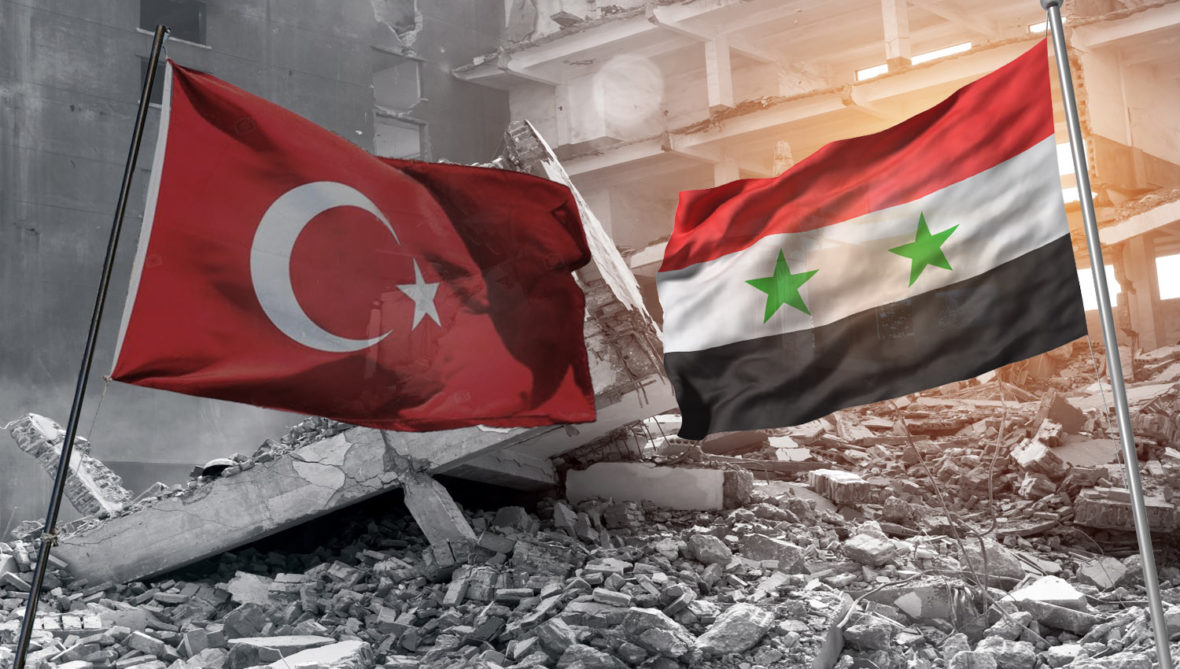
Turkey and Syria Shaken to Their Foundations
Listen to article:
It has been nearly two weeks since the catastrophe struck southern Turkey and north-western Syria and left scars in history that are literally deeply etched in its wake. On Monday, February 6, an earthquake measuring 7.8 on the Richter scale hit the area, and this blow from Mother Nature took both states by surprise at 4:17 a.m. local time. For some, time stood still; for others, it passed exceptionally quickly. But no one expected the disaster to repeat itself any time soon. With only a slightly less magnitude of 7.5, a second tremor shook the East Anatolian fault region just nine hours after the first quake. And there were several smaller ones. Data from the European Sentinel-1A satellite confirm that the ground has moved three metres due to the earthquakes.
Time has no respect for tragedies, and its passage only increases the number of victims, which has exceeded the difficult-to-digest figure of 47,000 so far. Time, however, may have already implied as much. The country was sinking in places before, and signs had pointed to the inevitability of disaster for quite a while.
Unfortunately, no one can ever say the essential thing – when exactly a situation like this arises again. Rescue work is ongoing all the time, and all indications are that this will not change any time soon. The country that changed beyond recognition is not going quiet, even though it would need a moment of silence to honour all it has swallowed up in its power. Cities, villages, fields, crops, lives, and futures were devastated. Volunteers, rescue workers and doctors are helping, and other countries are sending their rescue forces. Particularly complicated is the earthquake relief effort in Syria, which has been plagued by civil war for years. Add in Covid, cholera and economic decline.
Yes, what happened in Turkey and Syria can help find ways to better prepare for similar scenarios in the future. Only time will tell whether or not this will be true. The author of the article has mentioned time several times. That is for a simple reason. Even a fraction of a second may mean the difference between life and death, and a few seconds to react may mean years of life lived. The cracked earth will mend, but the broken hearts will never be mended. We must protect our lives in every possible situation.
How? Early warning solutions with electronic sirens can be one option for protection. An acoustic warning is activated by a signal and data from seismic probes placed deep underground, responding to even the most sensitive changes. Will it change the material damage done by an earthquake? Frankly, it won’t. Still, it will give people precious time to react adequately. With large earth movements like those in Turkey and Syria, it might be about 35 seconds, which equals an escape from a building or opening doors in fire halls so that firefighters can leave the station before it collapses. It could also give lift operators time to send lifts to the ground floor and railway workers time to slow down trains and avoid possible derailment—a few seconds to trigger the primary rescue instinct.
For more information on solutions to combat earthquakes and natural disasters, go to the Telegrafia website. If you are interested in our electronic sirens and other warning devices, please do not hesitate to contact us.

The article was written by
Róbert Jakab
Robert is like a moving photograph – because he is like a video. He can capture 60 frames per second. Whenever something happens, he records it. Currently, he’s working on smaller videos and hoping to make a feature film one day and then its sequel. Telegrafia 2: Monkey Power
